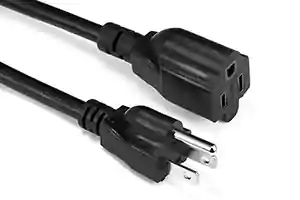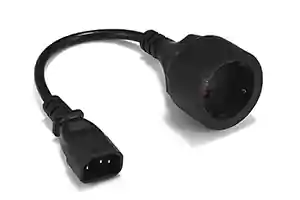Everything you need to know about the regulations for the installation of charging stations in condominiums
45% of French people live in co-ownerships, and 90% of electric vehicle recharging is done at home when possible. Therefore, it is undeniable that condominiums and property managers have to change things to help the democratization of electric vehicles. What are the regulations in this area? DCpowercord tells you everything in this mini-guide!

Table of Contents
- 1 What is the notion of pre-equipment?
- 2 Which buildings are concerned by the pre-equipment obligations?
- 3 The 3 important measures imposed by the Loi d’orientation sur les mobilités (LOM)
- 4 Can the syndicate of a co-owners object to this installation?
- 5 How to distribute the charging stations?
- 6 What assistance is available for the installation of electric charging stations?
What is the notion of pre-equipment?
To talk about the same thing, we need to first define the notion of pre-equipment, which comes up several times in this new regulation.
The term “pre-equipment” refers to the installation of conduits for the passage of electrical cables, as well as power and safety devices. This is essential for the future installation of charging stations for electric cars and plugin hybrids.
Note that the provisions mentioned in the rest of this article concern buildings for which applications for a building permit or a prior declaration are filed from Mar. 11th 2021.
Which buildings are concerned by the pre-equipment obligations?
This new regulation concerns buildings for tertiary use and new residential buildings.
As we have seen previously, buildings for which a building permit or a preliminary declaration is filed from Mar. 11th, 2021 are concerned, but they are not the only ones.
Residential buildings undergoing a major renovation of their parking spaces or electrical installation will also have to consider the issue. The concept of the major renovation includes work whose costs are greater than or equal to one-quarter of the value of the building. The value of the land is not included in this value, except when the installation price of the charging points and the connection is more than 7% of the total cost of the work.
Good to know: new buildings with a building permit filed between Jan. 1st, 2017 and Mar. 11th, 20121 remain under the pre-equipment obligations already established in the decree of Jul. 13th, 2016.
The 3 important measures imposed by the Loi d’orientation sur les mobilités (LOM)
The LOM law imposes several measures on condominiums regarding the installation of charging stations.
A reinforced right to a plugin
In article 69, the LOM extends the “right to plug” and simplifies it. Its purpose? To encourage and reinforce the installation of charging points in buildings that have already been built.
Definition of the right to a plugin
The decree n°2011-873, codified under article L111-6-4 of the Construction and Housing Code, defines the right to plug in condominiums and apartment buildings. It states that the condominium must pay for installing the infrastructure necessary for the installation of charging stations for electric and hybrid vehicles.
The right to a plug extended.
On Jan. 1st, 2012, the Grenelle law required condominiums to add individual or collective charging points to their enclosed and covered parking lots. Exactly 10% of the available spaces must be able to offer to residents.
And since Jan. 1st, 2015, residents of existing collective housing units have had the right to ask their condominium to install a charging station.
The problems with these provisions stemmed from the fact that the installation of charging stations was impossible on outdoor parking spaces owned by tenants or impossible for owners of bare parking lots (i.e., owners of a parking space, but not a dwelling).
As of Dec. 27th, 2019, the LOM allows outdoor parking lots and occupants of a parking space to benefit from installing a charging station.
Can the syndicate of a co-owners object to this installation?
Thanks to the LOM, no, the syndicate of co-owners can no longer reject this right to the plugin. However, two serious and legitimate reasons remain at their disposal if they want to oppose it:
The condominium already had to charge stations when the building was built;
The installation of charging stations has already been accepted, and the project is in progress.
Obligations for condominiums to equip and pre-equip parking lots
The LOM has reminded the obligation for co-ownerships to have a pre-equipment in anticipation of future requests for charging stations by the occupants of the dwellings. The whole will have to be decided and done within a reasonable budget for the parties. You will find the official text on this point in article 64.
Suppose the parking lot of the new building, under construction or located near new buildings dedicated to housing, offers more than ten spaces to residents. In that case, all the spaces must be pre-equipped with the necessary infrastructure.
The obligation for syndicates to install charging points
The legislator revised the law of co-ownership of 1965 and has given birth to a new article 24-5. It stipulates that before Jan. 1st, 2023, the syndics are in the obligation to put on the agenda of a general assembly the question of the installation of recharging points in the co-ownerships. They will have to ask the co-owners to carry out a study on the usefulness of doing the necessary work to install electric charging points.
For this study to be carried out, it must be voted by a simple majority.
Once this step has been completed, the syndic will put the work on the agenda of a new general meeting. The convocation that he will send to the co-owners will then include several annexes:
The work to be done is explained in detail;
The estimates and the financing plans developed;
If necessary, the draft contract detailing the conditions of management of the modified electrical network;
Finally, if it has been carried out, the preliminary study.
Again, this matter will be voted on by a simple majority.
What are the technical constraints for such an installation in a condominium?
The regulation defines two constraints: to have its meter and a connection procedure to follow.
Concerning the meter, the regulation stipulates that only the user will have to pay the costs of his terminal (in the case of an individual terminal). He must therefore have his own electric meter. This obligation was already included in the ministerial decree of 2011 – 873 dated Jul. 25th, 2011.
Concerning the connection procedure, it is worth noting that the individual charging point must be connected to the power supply room of the common areas. The user will not be able to choose his electricity supplier. It will necessarily be the one that the syndicate of co-owners has designated for the general panel. If he wants to choose his supplier and/or if the situation justifies it, he can ask to create a new PDL for his new meter. Good to know: Although this solution may seem interesting, it also generates more costs for the connection. This solution may be impossible to implement, especially if the configuration of the distribution column does not allow it.
What about existing residential buildings?
Based on the above, only new residential construction would benefit from the installation of charging points in their parking lots. Rest assured, if you live in an “old” building, and the law has not forgotten you!
Well, not completely… Indeed, if the building permit is before Jan. 1st, 2017, the new law does not impose anything in terms of pre-equipment. On the other hand, all is not completely lost for electric or rechargeable car drivers since Article R. 111-14-2 of the Construction and Housing Code states that the parking lot must be supplied with electricity to allow these owners to recharge their cars.
That said if major work on the electrical installations or the parking lot is planned, existing buildings benefit from the same prerogatives as new buildings. Therefore, your condominium should also plan to install the necessary equipment, and this on all its parking spaces. This applies to residential parking lots with at least eleven spaces.
How to distribute the charging stations?
There are several possibilities.
Shared charging stations usable by all the co-owners
Shared charging stations can be a viable solution when landlords manage the buildings, and the lots are therefore rented. This solution is also possible when co-ownerships can dedicate parking spaces to charging stations.
The obvious advantage for co-owners is the sharing of costs and easier access to electric mobility.
Dedicating certain parking spaces to electric car drivers
In some cases, it is possible to separate the allocation of a parking space from that of an apartment. This unbundling makes it possible to allocate a parking space with a charging point to the occupant of a dwelling who would drive electricity.
With this solution, buildings could choose to install charging stations only in certain parking spaces. For example, installation could be considered where charging stations would be the least expensive. This would avoid the more expensive installation of an infrastructure serving all the spaces.
Good to know: this may only be a temporary solution because if the number of electric vehicle owners increases, the “stop-gap” solution mentioned above may no longer be appropriate.
Provide shared infrastructure
The question inevitably arises when a charging infrastructure is considered. There are several points that help define the shared infrastructure precisely:
Its dimensions allow it to provide enough power to cover 20% of the parking lot’s needs;
The connection will be allowed to any user according to defined and non-discriminatory conditions;
The infrastructure will offer a charging control system as an option,
The infrastructure will have to offer at least one recharging point as soon as it is built. The number of charging points should then gradually increase until it covers the needs of at least 20% of users.
Provide for the connection of charging points to the delivery point already present in the common areas
When new charging stations are built, it will be possible to connect them to the existing delivery point in the common areas. The only condition is that its power allows such an operation.
Why is this connection advantageous? Simply because it exempts the condominium from financing the increase in power already subscribed. Another expense avoided for the condominium: the cost of charging. It only has to bill the users for their consumption at a price per kilowatt.
The condominium will also have to plan a key for sharing the costs generated by the installation of the charging stations among the different drivers. They will have to pay for the connection of the terminals to the PDL as well as for the individual meters.
Provide for the installation of a delivery point and a general low voltage switchboard
At the request of the co-owners, it is possible to differentiate the connection of the charging stations from that of the common parts. To do so, the electricity network manager will install another PDL and a low-voltage switchboard dedicated to the charging stations’ infrastructures.
The co-ownership will then have to choose between two options:
The condominium finances the work. It asks for the installation of a device to read the meters. It defines a distribution key for the installation costs. The users of the terminals proceed to the connection of their terminal at their own expense. Before doing so, they must have obtained the agreement in principle of the general assembly, as the cables will necessarily pass through the common areas. In another case, the condominium also pays for the connection of the terminals.
The co-ownership turns to a recharging point installer. This solution has a practical side because it is this third-party investor who will take care of the installation of the PDL and the connection of the parking spaces. In this case, the co-ownership does not pay for the installation. On the other hand, it commits itself to the service provider for a certain period. The drivers will have the possibility to take out a subscription with this service provider.
With this second solution, any risk of saturation and exceeding the subscribed power is avoided. Moreover, suppose it is an IRVE qualified service provider that is chosen by the co-ownership. In that case, drivers wishing to install a charging station on their parking space will be able to make a request to the service provider.
What assistance is available for the installation of electric charging stations?
Because the installation of such infrastructure represents a certain cost, aid can be granted.
Among them, you will find the AVENIR program. It allows you to benefit from the payment of 50% of the material and equipment of a charging station, whether it is reserved for individual use or whether it is shared. The ceiling is 1,660€. In order to benefit from this subsidy, it is necessary to use a commercial offer labeled by the AVENIR program. Maximum power of 22 kW will power the charging stations. They must also be equipped with an electric control system to receive the subsidy.
AVENIR funding can also be used to support collective infrastructures in condominiums. Here again, the assistance will be 50%.
The financing of the program Advenir 3 000 properties also grants, since January 2020 and to the first 3000 co-ownerships that apply for it, an aid of 50% of the price of a collective infrastructure. The ceiling is set at €4,000 and is limited to parking lots with a maximum of 50 spaces. If the parking lot has more than 50 spaces, 75 € more are granted, for a maximum of 15 000 €. The advantage: this bonus can be combined with that of the AVENIR program. However, the ceiling is 80% of the total cost.
Note that a motorist living in a condominium has every right to invoke his or her right to a plug to install a charging point at his or her own expense on the parking space.
He also can apply for assistance. This is the AVENIR subsidy and the energy transition tax credit.
Finally, local aid also exists. Among them, let’s mention those that allow the co-ownerships of the capital to benefit from two aids that can be combined with the AVENIR aids:
An aid of 50% of the amount of work intended for the electrical pre-equipment. The ceiling is set at 4 000 €. This pre-equipment can have two purposes: the installation of a recharging point or the repair of a riser for electric or hybrid cars;
Assistance for 50% of the work cost for the installation of recharging points in common areas for the use of residents and their visitors. This aid is valid for a maximum of 500 € per charging point and 4 charging points.
Now It’s Your Turn
So that’s how I understand the regulations for the installation of charging stations in condominiums.
Now I want to turn it over to you: Through my article, you know about the regulations for the installation of condominium charging stations?
Do you have a different point of view with the condominium charging stations? Or any other questions?
Let me know by leaving a quick comment below right now.




